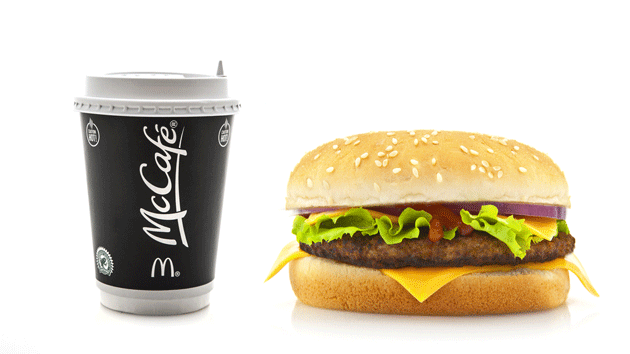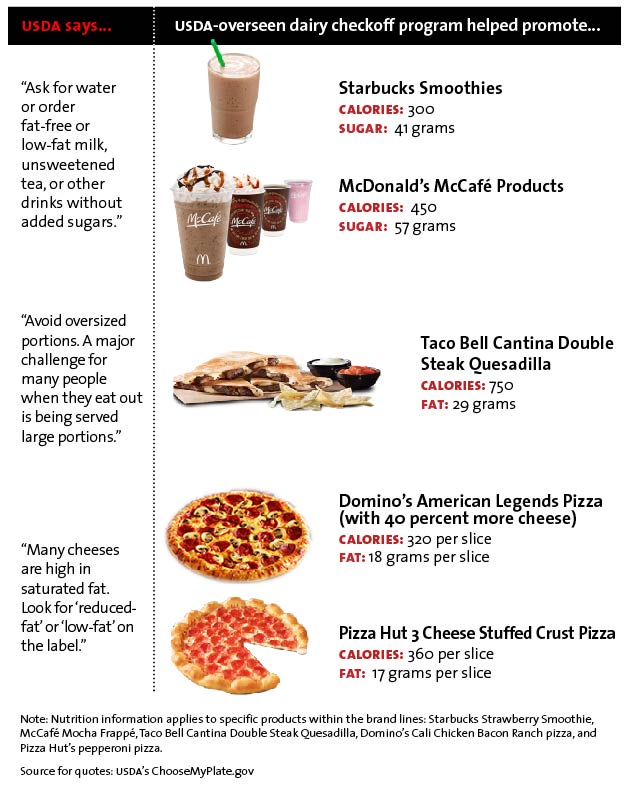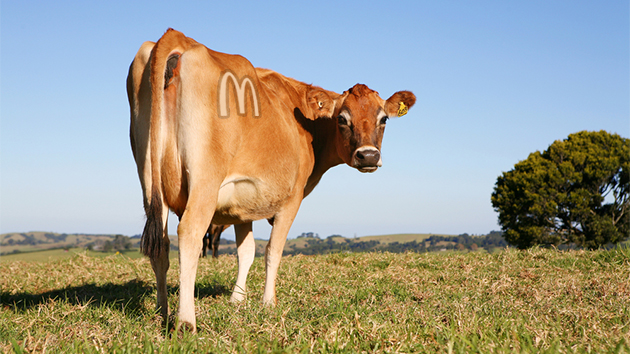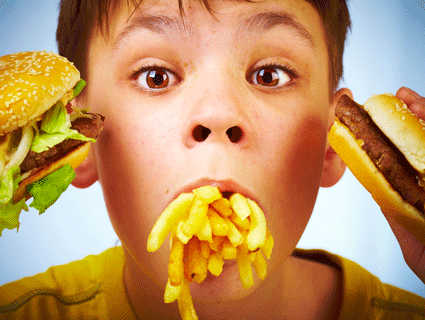
<a href="http://www.shutterstock.com/pic-188539844/stock-photo-swindon-uk-april-mcdonalds-mccafe-coffee-with-cheeseburger-on-a-white-background.html?src=WfS6B969kVZ5OKYd01SK-Q-1-28" target="_blank">Jon LeBon</a>/Shutterstock
The USDA’s MyPlate program recommends going easy on fast food: “People who eat out more often, particularly at fast food restaurants, are more likely to be overweight or obese,” it says.
Sounds sensible enough. But there’s one little problem: The USDA also oversees the dairy checkoff, a group that works hand in hand with fast-food chains. That’s one of the main findings in a new report by Michele Simon, a public health lawyer who writes about food politics. The bulk of the dairy checkoff’s work with fast-food chains happens through a marketing group called Dairy Management Inc., which regularly helps companies create and promote menu items that contain dairy—many of which are a far cry from USDA’s recommendations for a healthy diet. A few examples:

Here are a few more details on those partnerships:
- Since 2009, the dairy checkoff has promoted (PDF) what it calls “cheese demand-enhancement” through a partnership with Domino’s Pizza. By creating a pizza with 40 percent more cheese, it has generated $177 million through sales of more than a billion additional pounds of milk. In 2013, the dairy checkoff helped Domino’s introduce a USDA-approved school lunch pizza called Smart Slice in 450 districts across 39 states.
- In 2013, the Dairy Checkoff partnered with Taco Bell to launch Cantina Double Steak Quesadillas and new cheese shreds, increasing its total dairy sales by 4 percent.
- In 2013, the dairy checkoff helped Pizza Hut create the 3 Cheese Stuffed Crust Pizza, the chain’s first new permanent menu item in almost 20 years.
- A dairy checkoff partnership helped Starbucks launch its smoothies, which use more than 3.7 million pounds of whey protein each year. (PDF)
- The USDA’s National Dairy Promotion and Research Program helped McDonald’s launch McCafé beverages and the Angus Cheeseburger (now discontinued). (PDF)
The dairy checkoff also provides six dairy specialists—who offer “technical assistance, support, and dairy expertise”—to McDonald’s, and it employs an on-site dairy scientist at Taco Bell.
So how, in good conscience, can the USDA recommend limiting visits to fast-food restaurants on the one hand—while helping those very restaurants sell more junk food on the other? I put that question to USDA spokesman Cullen Schwarz. He told me that he doesn’t consider the dairy checkoff—or any other checkoff program (they exist for practically every agricultural product imaginable)—part of the USDA. He told me that the agency’s power over the group is limited. “Check-off programs are not USDA initiatives, they are completely initiated, funded, and implemented by agricultural producers so they can join together to advertise their products,” he wrote to me in an email. “USDA only has the power to ensure these industry efforts are conducted in accordance with the law, and any changes in USDA’s authority over these programs would have to come from Congress.”
Simon told me she wasn’t impressed with that line of reasoning. She pointed out that the USDA sends representatives to dairy checkoff meetings and issues annual reports to Congress on its activities. What’s more, the US Supreme Court ruled in 2005 that checkoff programs count as “government speech.”
“So the USDA oversees it, but they’re hands off with how the money is used?” said Simon. “Frankly, that makes it all the more worrisome.”












